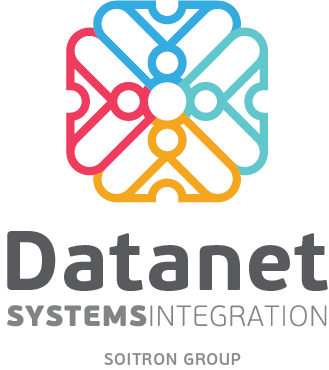
The volume of investments in Cloud Computing globally will almost double over the next three years. The growth rate provided is six times faster than that recorded in the whole IT market.
IDC estimates that the global Cloud market – which includes all the three sectors (Private, Public and Hybrid Cloud) – will reach this year a value of 118 billion dollars, and in 2018 it will exceed the threshold of 200 billion USD. The growth rate recorded so far is 25.9% (from 76.1 billion USD in 2013 to 95.8 billion in 2014). For this year, the above-mentioned analysts forecast a further 23.2%.
Rapidly growing interest
Although the Public Cloud domain still enjoys the highest popularity, due to the concentration of the efforts of service providers in this area, Hybrid Cloud starts to be increasingly regarded as the optimal model for the adoption and development of Cloud technologies and services in the enterprise environment.
Technology Business Research indicates for 2015, e.g. a growth rate of 50% adoption rate of the adoption rate of the hybrid model by companies, clearly higher than that recorded by the Private (35%) and Public (25%) sectors.
In its turn, Gartner estimates that this year approximately 75% of large enterprises are using and/or will develop hybrid projects. A prediction confirmed by recent market surveys published by Avanade (indicating a Hybrid Cloud adoption rate of 73% globally) and Gigaom Research (advancing a value of 76%, but only for the North American market).
However, the positive assessment of the rate of adoption are confirmed regardless of the size of the companies. According to the survey conducted last year by Tech Pro Research, 36% of companies with up to 50 employees were already using Hybrid Cloud, for those with up to 250 employees, the adoption rate was 21% and the companies with between 250 and 999 employees – 30%.
The advantages of the hybrid approach
Beyond figures and estimates, the arguments that justify a widespread adoption of the hybrid model are universally applicable. Currently, not many mature companies with a developed IT infrastructure can afford to ignore the Cloud offer, but even less wish, can and are ready to make the total jump in the Cloud.
The reasons for which the organizations avoid migrating entirely in the Cloud and prefer to use and integrate only certain services provided from it are not related only to the need to amortize and capitalize the investments in technology already made. This is one of the reasons, but not the main one.
The arguments from a strictly financial perspective are in favour of the public Cloud, which can ensure significant scale economies for any kind of organization, can provide more flexibility and agility, as well as other important benefits. But what Public Cloud service providers often lose sight of is that all these pluses must address and – especially! – solve specific business problems, not just technological ones.
However, the Hybrid model has the advantage that addresses precisely these requirements and allows companies to innovate, test and develop a solution adapted to their needs, facilitating informed choices. It may sound paradoxical, but from this perspective, Cloud did not lead to an increase in the level of risk – investments and not only – but generated the opposite effect, giving companies the opportunity to experience at a level at which they have not have had access before.
This is not about technological, but business experiments. The benefits of the new technologies are extremely attractive, but must be addressed and analysed from the perspective of the business problems they solve, the opportunities they create, and the manner in which they facilitate their capitalization. The above-mentioned Avanade survey (conducted on a sample of 1,000 companies from 20 countries) indicates that most respondents consider the hybrid model as the ideal solution for the identification, creation and development of new competitive advantages, able to ensure the growth of the own business and to exceed competitors.
Specific challenges and accessible solutions
However, the optimistic expectations concerning Hybrid Cloud do not circumvent its specific problems. Which problem do not differ significantly from those faced by most companies at the moment, which consist of identifying and rapidly solving the problems occurred in the management of multiple services and resources from Cloud, and integrate them into the existing information systems in a secure consistent and economically effective manner.
Until now, market research shows that the main difficulties faced by the companies that have developed and use the Hybrid Cloud model are related to:
- reduced visibility on the hybrid environmentalist;
- limited capabilities of the monitoring tools;
- lack of operational workflows able to coherently integrate heterogeneous environments;
- difficulties in proving the compliance with the security requirements and standards.
In addition, there are other specific challenges such as:
- Control of the data from multiple locations, delivered by different Cloud service providers;
- migration of data from one provider to another;
- Control of the access to data;
- integration of several types of services from different providers.
They are real problems, but not insurmountable, which can be overcome partly with the help of Cloud services providers. But especially the one offered by system integrators, which can find and implement solutions for the capitalization of the existing IT infrastructure, creating reliable hybrid architectures.
The need for a “hybrid CIO”
Some specialists believe that the sustained growth of the pace of adoption of Hybrid Cloud is a clear signal that “cloud gets down to earth” and that the organizations are shifting to a pragmatic approach of the Cloud, tailored to their needs. Others claim that the hybrid model can be likened to a car that uses both an electric motor and internal combustion engine, benefiting from the advantage of being more economical and with greater autonomy.
The fact is that Hybrid Cloud offers the advantage of IT flexibility and agility, in the context of a controlled cost, and of the management of extensive options for capitalizing on the benefits of Cloud Computing. However, the success of the Hybrid Cloud model adoption and development in a company stands involves the CIO’s hybrid approach as well. In other words, he should renounce the strictly technical approach and should involve active IT strategies in identifying and supporting business growth strategies.
For more information please contact us at marketing@datanets.ro.
 Major trends on the data center market
Major trends on the data center market
